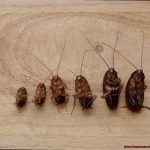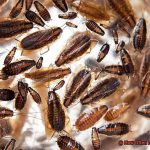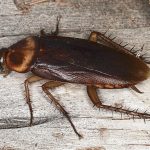Cockroaches are truly amazing creatures that have been around for millions of years. They are known for their incredible resilience and ability to survive in the harshest of conditions. But have you ever wondered if they have blood flowing through their bodies? The answer may surprise you.
Contrary to popular belief, cockroaches do indeed have blood in them, just like any other living organism. However, their blood is not like ours. It lacks hemoglobin, which gives our blood its red color and instead is colorless. But don’t let that fool you – cockroach blood plays a vital role in their survival.
Their blood acts as a carrier of nutrients and oxygen to various cells and tissues in their body, helping them stay healthy and strong. It also aids in fighting off infections and diseases, making them less susceptible to harm from bacteria and other pathogens.
Understanding more about the unique properties of cockroach blood can give us insight into how they are able to adapt and thrive in different environments. These remarkable creatures truly are a marvel of nature.
So, let’s get started.
What is the Blood of a Cockroach?
Contents
Well, it turns out that these creepy crawlies do indeed have blood, but it’s quite different from human blood. The blood of a cockroach is known as hemolymph, which serves the same purpose as blood in other animals, but with some unique features that make it fascinating to study.
Unlike human blood, hemolymph is a clear, colorless fluid that circulates freely throughout the insect’s body cavity. It contains no red blood cells or hemoglobin, which are responsible for carrying oxygen in our bodies. Instead, cockroaches have hemocytes – specialized cells that carry out various functions such as wound healing, immune defense, and transport of nutrients.
Hemocytes are the superheroes of the insect world. These cells defend the cockroach against harmful pathogens and parasites by engulfing them or releasing toxins to kill them. They also help in clotting when the insect is injured, forming a scab-like substance to stop bleeding. In times of stress or injury, hemocytes can release specific chemicals that help to initiate the immune response.
The composition of hemolymph can vary depending on the physiological state of the cockroach. Hemolymph consists of water and various solutes such as amino acids, proteins, and carbohydrates. During times of stress or injury, the composition of hemolymph changes as certain chemicals are released to combat the situation.
One interesting feature of hemolymph is that it flows freely through the insect’s body cavity, known as the hemocoel. This fluid-filled cavity acts as a hydraulic system to help support the insect’s movements and provide cushioning against external forces.
What are Hemocytes?
Instead, they have hemolymph – a clear, colorless fluid that carries nutrients and oxygen to the body tissues. And what’s even more fascinating is that this fluid contains tiny but mighty cells called hemocytes.
Hemocytes are the superheroes of the cockroach’s immune system, responsible for protecting the insect from harmful invaders like bacteria and viruses. They also play a crucial role in cleaning up any damaged or dying cells within the body. Produced in the insect’s fat body, hemocytes travel throughout the body along with the hemolymph, always on guard against potential threats.
Think of hemocytes as tiny soldiers patrolling every inch of the cockroach’s body, ready to take on any enemy that may cross their path.
These amazing cells are a key component of the cockroach’s unique circulatory system, which allows for the free flow of hemolymph throughout the insect’s body cavity.
How Does the Blood of a Cockroach Flow?
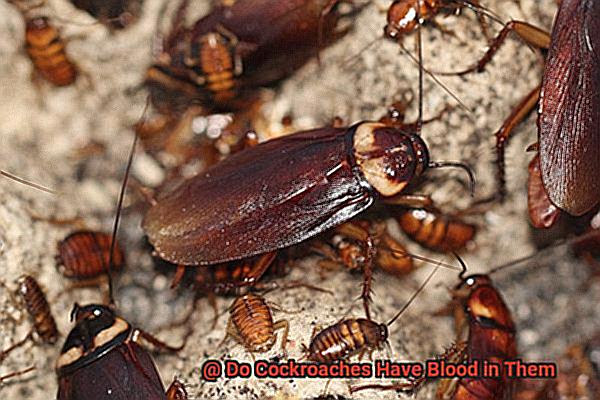
The answer lies in their unique circulatory system, which is quite different from the one found in humans and other animals.

For starters, cockroaches don’t have blood. Instead, they have hemolymph, a clear, colorless liquid that flows through their bodies. And unlike human blood, hemolymph doesn’t flow through vessels or veins. Instead, it flows freely around the organs and tissues in the cockroach’s body cavity, known as the hemocoel.
Think of it as a river that nourishes everything in its path. Unlike our circulatory system that relies on vessels to transport oxygen and other nutrients to different parts of our body, hemolymph works in tandem with the tiny tubes called tracheae that make up the cockroach’s respiratory system.
These tubes transport oxygen to different parts of the body while hemolymph carries nutrients and waste products around. It’s a fascinating system that ensures cockroaches get everything they need to survive without specialized vessels or veins.
If you were to cut open a cockroach (not recommended), its hemolymph would spill out into the surrounding area instead of being contained within specific vessels. This may seem messy, but it’s an effective way for these insects to survive and thrive.
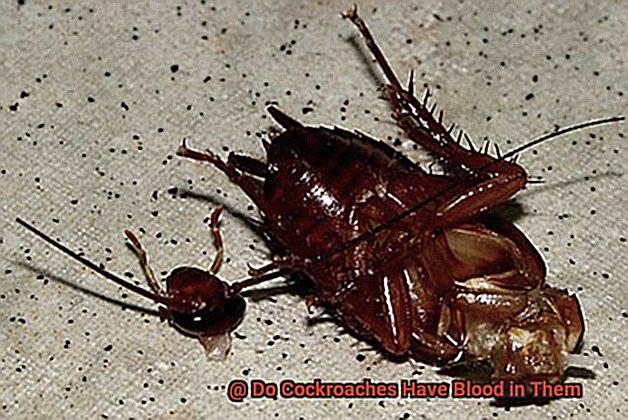
The Role of Hemocytes in a Cockroach’s Immune System
Hemocytes are the unsung heroes of the cockroach world, tirelessly defending against pathogens, repairing wounds, and removing foreign particles from the body.
These colorless cells are often referred to as “blood cells,” though they are quite different from the red and white blood cells found in mammals. Hemocytes in cockroaches are produced by specialized tissue called hematopoietic organs, which are located throughout the body – in the head, thorax, and abdomen.
When a cockroach encounters a pathogen or foreign substance, hemocytes are immediately mobilized to the affected area to fight off the invader. There are different types of hemocytes with specific functions in the immune system: granulocytes encapsulate and destroy invading pathogens, plasmatocytes promote wound healing and phagocytosis, oenocytoids produce melanin to help seal off wounds, while spherulocytes produce enzymes that break down toxins.
Hemocytes are critical to a cockroach’s survival. Without them, these insects would be much more susceptible to infections and other harm. They act like an invisible army of bodyguards protecting the cockroach from harm and helping it thrive even in the harshest environments.
Clotting Mechanism in Cockroaches
Step into the world of cockroaches and witness an extraordinary feat of nature – the clotting mechanism. As an expert in this field, let me take you on an exhilarating journey to unravel the mysteries behind the unique clotting mechanism in these resilient creatures.
Unlike mammals, cockroaches have an open circulatory system where their hemolymph – a fluid that replaces blood – flows freely throughout their body cavity. In the event of an injury, this hemolymph immediately begins to clot, preventing further loss of vital fluids necessary for carrying nutrients and oxygen throughout the insect’s body.
This intricate clotting mechanism involves a series of steps that require several proteins and cells working in synchrony. The process begins when coagulocytes – specialized cells – release a protein called coagulin. This protein attaches itself to the surface of the wound and forms a scaffold or matrix, which is then strengthened by transglutaminase, a catalyst enzyme that cross-links proteins.
As the matrix becomes stronger, hemocytes – other cells – are recruited to the wound site to aid in clot formation. These cells release additional proteins such as prophenoloxidase, which acts as an antimicrobial agent against infections.
The end result of this remarkable process is a clot or scab over the wound, effectively stopping further loss of hemolymph and allowing the insect to continue its daily activities uninterrupted. Although slightly different from blood clotting in mammals, this process serves a similar purpose and is essential for survival.
H_HxwLHX8mc” >
Conclusion
In conclusion, the answer to the question “Do Cockroaches Have Blood in Them?” is yes, they do. However, their blood is not like that of humans or other animals. Instead, cockroaches have hemolymph flowing through their bodies. This clear and colorless liquid lacks hemoglobin but plays a crucial role in their survival by carrying nutrients and oxygen to different cells and tissues.
Hemocytes are tiny cells that act as unsung heroes in the cockroach world. They defend against pathogens, repair wounds, and remove foreign particles from the body. These critical cells act like an invisible army of bodyguards protecting cockroaches from harm.
The clotting mechanism in cockroaches is another remarkable feature that ensures their survival. Unlike mammals’ closed circulatory system, cockroaches have an open circulatory system where hemolymph flows freely throughout their body cavity.
In case of injury, this hemolymph immediately begins to clot, preventing further loss of vital fluids necessary for carrying nutrients and oxygen throughout the insect’s body.



